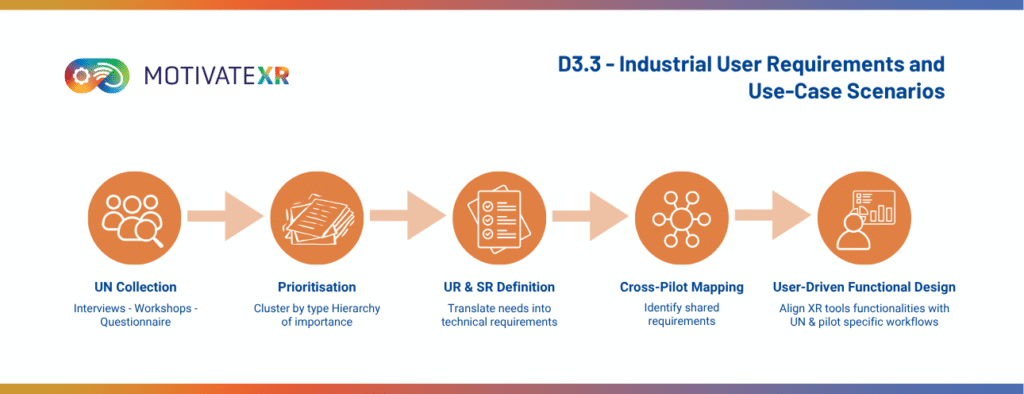As the world becomes increasingly digital, the rise of Extended Reality (XR)—encompassing Virtual Reality (VR), Augmented Reality (AR), and Mixed Reality (MR)—is transforming how we interact with our environment, consume content, and work together. From immersive gaming and entertainment to advanced training and remote collaboration, XR is unlocking new possibilities for businesses and consumers alike.
One of the most exciting developments in the XR space is the integration of Generative AI. This powerful combination is enabling developers to create more dynamic, personalised, and realistic virtual worlds while also reducing development costs and time. By leveraging AI, creators can bring everything from lifelike detailed environments to interactive simulations and intuitive user interfaces to life in ways that were previously unimaginable.
In this blog, we explore how Generative AI is driving the next wave of innovation in XR—helping to elevate user experiences, enhance content creation, and streamline development. Whether you are an XR enthusiast or a developer looking to explore AI’s potential, understanding how this technology is transforming XR is key to staying ahead in this rapidly evolving space.
1. Enhancing User Experiences
At the heart of XR’s appeal is its ability to deliver immersive, interactive user experiences. Generative AI enhances this by enabling more personalised and adaptive interactions. As users engage with XR environments, AI can dynamically adjust elements like avatars, interfaces, and content based on the user’s actions, emotions, or preferences.
For example, AI can:
- Predict user behaviour and tailor the XR experience accordingly.
- Create dynamic environments that change in real-time based on the user’s movements or choices.
- Use emotion recognition to adjust the experience based on the user’s mood or stress levels, creating a more intuitive and engaging environment.
This level of responsiveness not only makes XR more engaging but also ensures that each user’s experience feels uniquely theirs, increasing immersion and satisfaction.
2. Revolutionising Content Creation
One of the most significant benefits of incorporating Generative AI into XR development is the transformation of content creation. Traditionally, creating immersive environments, characters, and interactions in XR required extensive manual input, which could be time-consuming and resource-intensive.
Generative AI, however, enables creators to automate much of the content creation process. From hyper-realistic landscapes and avatars to complex interactive simulations, AI can generate content at scale, saving both time and costs. AI algorithms can learn from vast datasets to create unique, never-before-seen environments, providing fresh experiences with every iteration. This not only enhances creativity but also allows developers to explore new design possibilities with greater ease.
For instance, AI can generate detailed 3D models of buildings, objects, and terrains that look realistic and behave naturally in virtual environments. This level of dynamic, automatic generation makes XR experiences more immersive and engaging, helping users feel like they’re truly part of the digital world.
3. Streamlining Device Development
Another significant impact of AI in the XR space is how it’s revolutionising device development. Generative AI plays a critical role in optimising both hardware and software for XR experiences, helping engineers design more effective, responsive, and efficient devices. AI can simulate various use cases and environments to predict how XR hardware will perform, fine-tuning everything from visual fidelity to user interaction.
In XR devices such as VR headsets, AR glasses, or motion controllers, AI helps with:
- Predictive analytics to optimise battery life, motion tracking, and responsiveness.
- Personalisation to adjust the device’s settings based on the user’s preferences or physical interactions.
- Intelligent adjustments to make sure that the XR system dynamically adapts to different lighting conditions, environments, or user behaviors.
In essence, AI doesn’t just enhance the software running within XR ecosystems—it’s instrumental in the creation of smarter devices that improve user interactions and overall experience.
Conclusion: The future of XR is here—and it’s driven by Generative AI!
Generative AI is truly a game-changer for the XR industry, providing a host of benefits that empower creators, developers, and end-users alike. From enhancing user experience to transforming content creation to streamlining device development, AI is making XR more powerful, immersive, and accessible than ever before.
Stay tuned as we elaborate further in our next blog post: on how XR is transforming training and customer experiences, optimising XR asset performance and how it enhances Synthetic Data Generation.
Interesting resources:
- Vallasciani, Giacomo & Stacchio, Lorenzo & Cascarano, Pasquale & Marfia, Gustavo. (2024). CreAIXR: Fostering Creativity with Generative AI in XR environments.
- StellarX (2024). How the Convergence of Generative AI and XR will Redefine the Workplace
- Manu_YordStudio (2024). How AI is Shaping the Future of Extended Reality (XR)
- XR Today (2024). 6 Reasons to Invest in Generative Ai in XR in 2024



